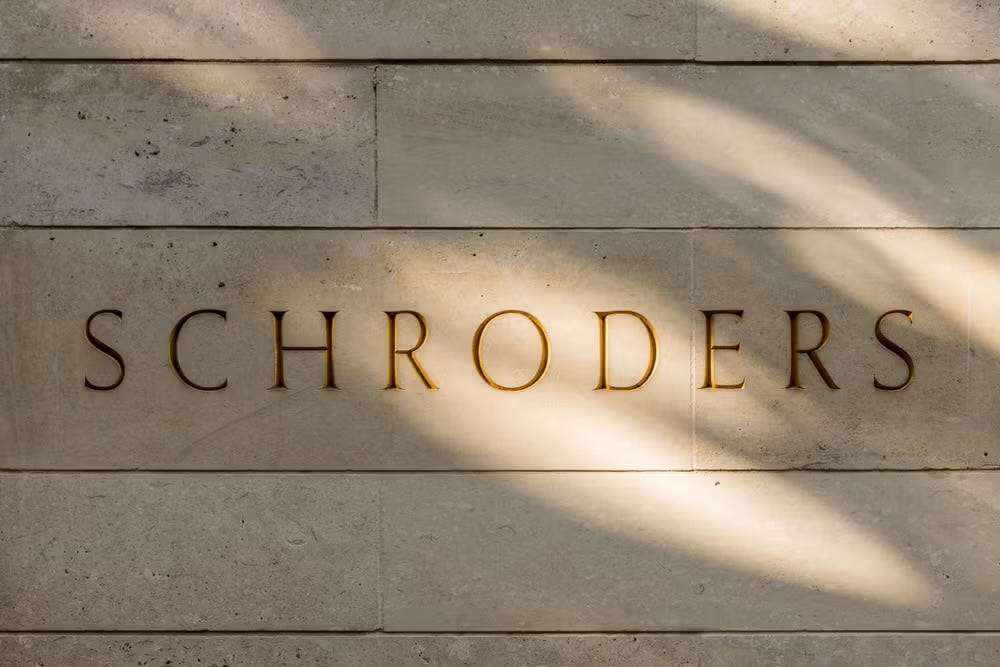Schroders: A Sleeping Giant in European Finance?
With thanks and credit to Swen Lorenz, who originally surfaced this idea at Undervalued-Shares.com
This is not my original idea. Credit goes to Swen Lorenz for putting Schroders back on the radar. I’m simply amplifying a compelling case that fits squarely into the kind of setups I like: forgotten, ignored, and deeply misunderstood.
In today’s market, where liquidity is chasing momentum and the passive machine dominates capital flows, unloved businesses in slow sectors tend to get mispriced. European finance, as a sector, sits squarely in that blind spot. The narrative is stale. The sentiment is exhausted. That’s when I get interested.
A Legacy Business at the Crossroads
Schroders has existed since 1804. It is still 44 percent controlled by the founding family. It employs 6,000 people, manages roughly 1 trillion dollars in assets, and trades at a valuation that suggests permanent irrelevance.
But this is not some slowly dying relic. The business still produces cash, still pays a 6 percent dividend, and still holds a trusted brand in markets like India and China.
Yes, they’ve made mistakes. The ESG push turned out to be an expensive detour. Acquisitions were misjudged. Costs ran too high. And under the previous CEO, transparency became optional.
But all of that can be fixed. And it’s already starting.
New Leadership, Real Action
Richard Oldfield is now in charge. He didn’t come from the asset management bubble. He spent decades at PwC, understands numbers, and seems focused on practical change. Early moves include
• A £150 million cost-cutting program
• Trimming the executive committee
• Reintroducing reporting transparency
That last one matters more than most think. For years, investors couldn’t even piece together the true economics of the divisions. That lack of clarity alone was enough to drive institutions away. Rebuilding that trust is a slow process, but the first steps are already visible.
The Tikehau Trigger
Enter Tikehau Capital.
One of Europe’s fastest-growing alternative asset managers, they quietly picked up 5.2 percent of Schroders on their own balance sheet, not in a fund. That is serious skin in the game.
This isn’t a passive stake. It is too big to flip and too small to control. That signals intent. Tikehau has grown its AUM from 3 million euros in 2007 to 50 billion today. They don’t take unnecessary risks.
This is the kind of calculated position that precedes structural change.
Why Now
Schroders has hit an inflection point. Its public fund management business is in structural decline, squeezed by passive strategies and rising fee pressure. But it still has profitable arms in private markets and wealth management.
Most importantly, the business has options.
It can simplify.
It can sell its core public funds division.
It can return capital.
It can refocus entirely around wealth.
In today’s market, the upside doesn’t need blue-sky projections. Simply getting back to sector-average valuation, around 14 times earnings for wealth managers, from today’s level near 9 times implies 50 percent upside. Add in a special dividend or a strategic buyer, and you have a case for more.
You don’t need 10 variables to go right. You only need one or two.
A Cleaner Story is Within Reach
Right now, Schroders looks messy. Too many divisions. Too much legacy ESG baggage. Not enough clarity. But that is precisely the point.
The equity is priced like a confused bloated firm with no future. But the pieces, if separated or restructured, could unlock significant value.
Private markets are growing fast. £70 billion AUM and highly profitable.
Wealth management is strong, especially in Asia.
Public equity funds could be sold, freeing up cash and simplifying the model.
And then there’s optionality.
What if Tikehau increases its stake
What if they push for a merger or strategic partnership
What if the family finally says yes to a full pivot away from active management
Any one of those would light a fire under the stock.
Capital Discipline is Coming
The Schröder family is conservative, but not inert. When they sold the investment bank in 2000, many were surprised. That decision was made at the top of the cycle, at a time when sentiment was euphoric.
It was the right call. The capital was reinvested into asset and wealth management, and over the next 25 years, Schroders’ AUM grew 5x.
That kind of stewardship matters.
There’s a reason Tikehau chose this particular firm. They see the optionality. They see the embedded value. They see the willingness to evolve.
Final Thoughts
This is not a buy recommendation. It’s a setup worth watching.
I’m not building a position in Schroders today, but it has moved to the front of my watchlist. It fits the kind of asymmetric profile I look for
• Ignored and mispriced
• High-quality brand and financial base
• Clear catalyst in play
• Optionality through strategic transformation
The market hates complexity. But complexity is often where mispricing hides. Schroders, with the right leadership and right pressure, could turn into a very clean story.
Sometimes, the best investments are born in silence. No hype. No fanfare. Just a slow reawakening of something that had been left for dead.
If that happens, those who bought in at 9 times earnings and waited on a 6 percent yield may end up with something rare.
A high-quality, European compounder bought at the price of a cigar butt.



Schroders is outsourcing a lot of their business. Sometimes it's not the best having an accountant in charge of the vision!